Six Easy Steps to Set Up a BOX BIN
The box bin is a batch processor – your worms will produce one batch of vermicast in about six months. Following each vermicast harvest, you will re-bed the colony and start again. A simple plastic storage tote makes an excellent worm bin to practice the basics of vermicomposting. Drill plenty of holes in the bottom for drainage and along the top of the four sides for aeration.
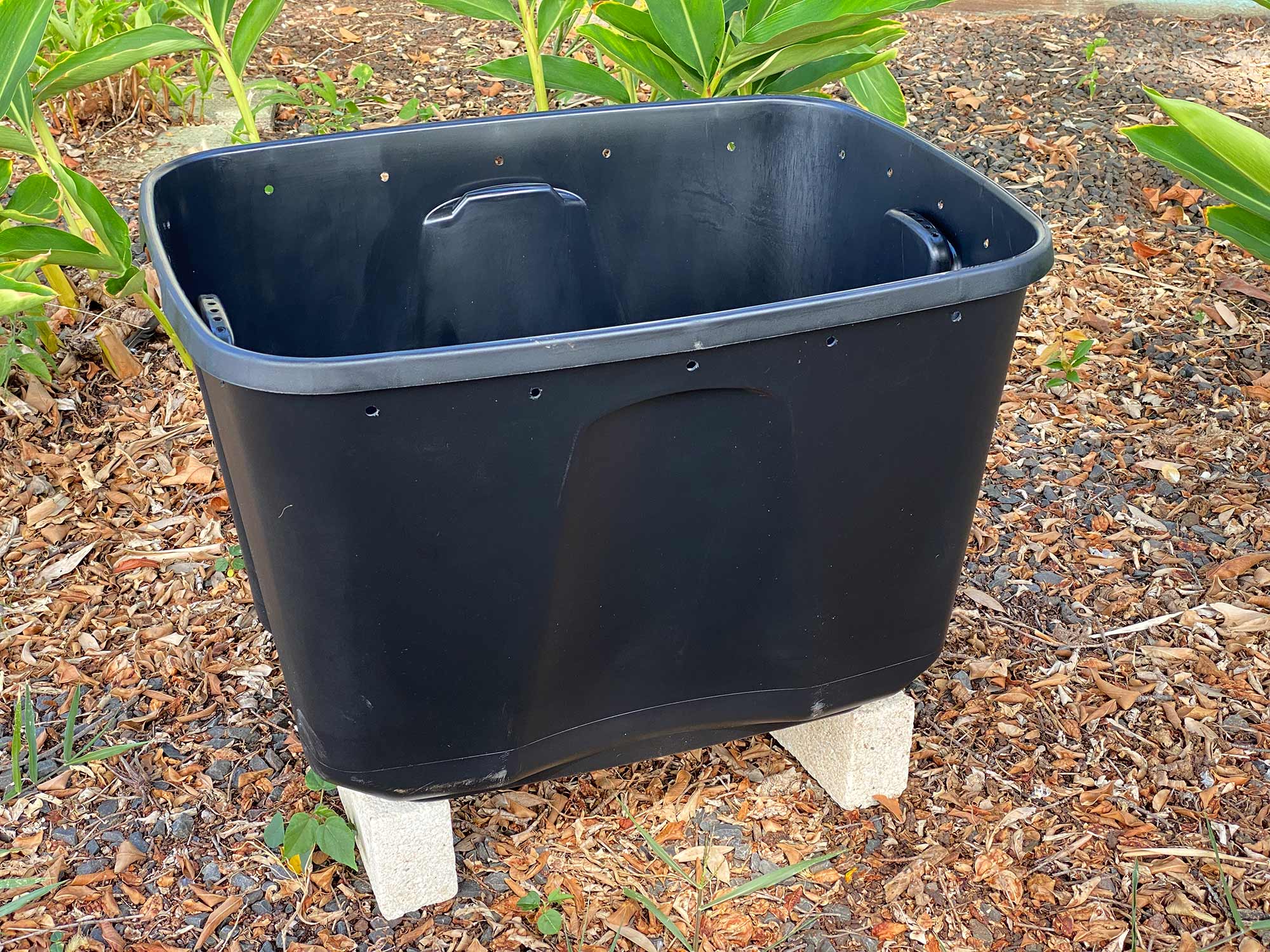
1. Location
Select a shady place for your worm bin, placed directly on the ground, on a pad of mulch to absorb the drainage, or on a surface that can be hosed down. You will be watering daily, flushing the bed until it drips out the bottom.
Elevate the bin on bricks so that there is always air underneath the bin and it drains freely.
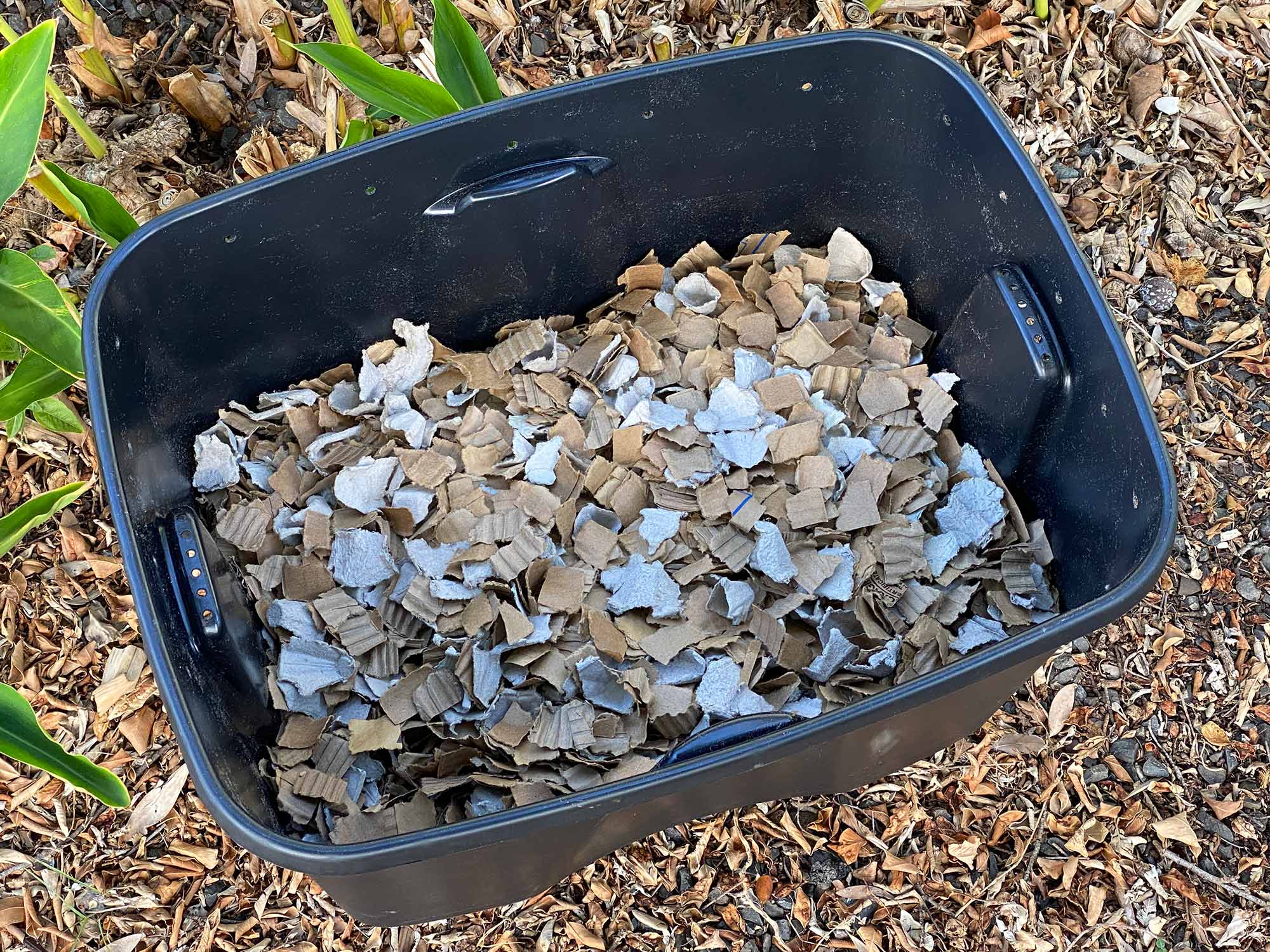
2. Bedding
Add 4 to 6 inches of moist bedding
made from coconut coir, pine shavings,
or household cellulose such as egg cartons or cardboard soaked and torn into small pieces. The perfect substrate features multitudinous moist surfaces and contains numerous tiny air pockets. As the cardboard decomposes, it will be consumed by the worms and converted – along with food waste – into vermicast.
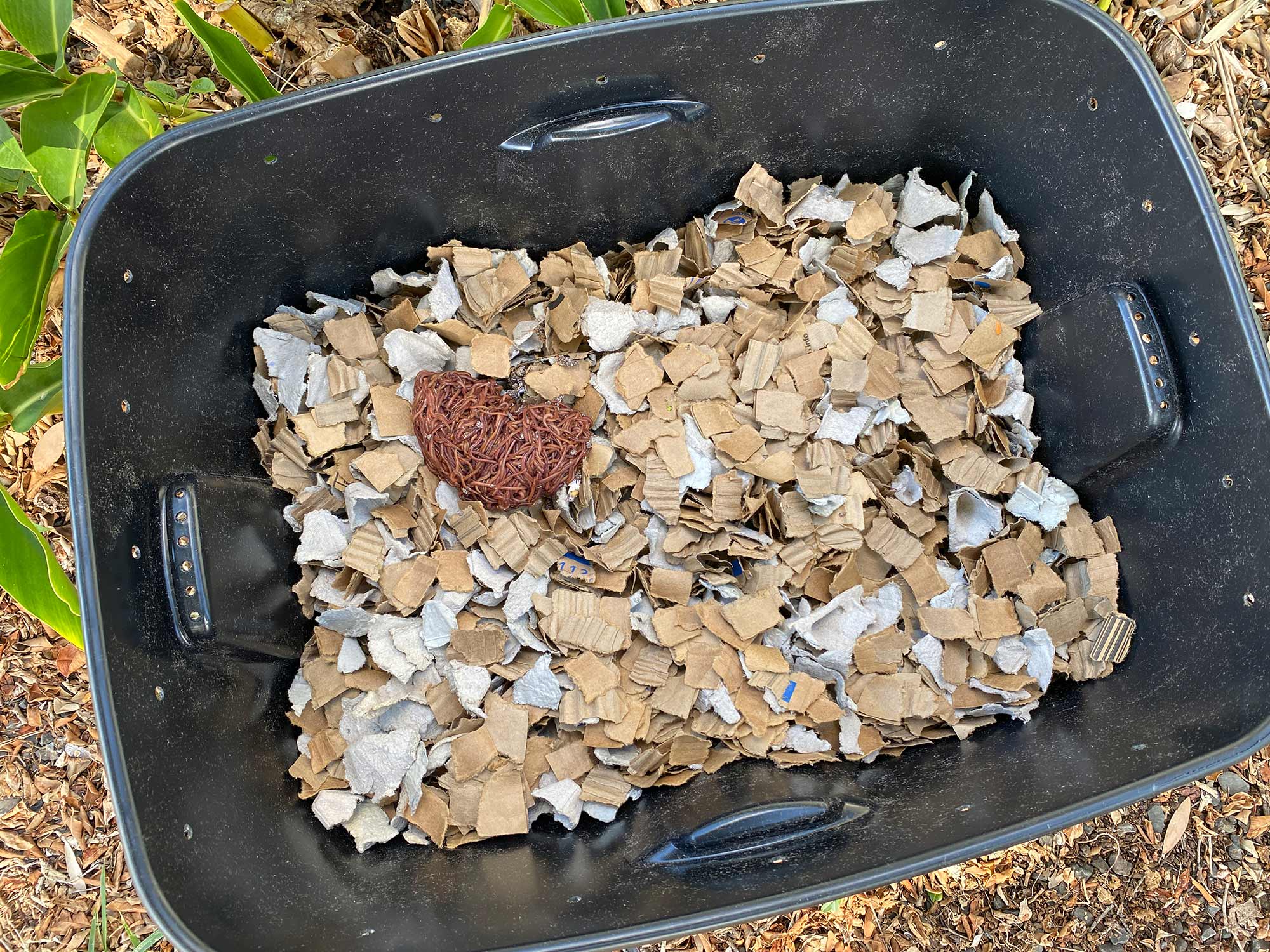
3. Worms
Add worms to the bin including the bedding they were packed in. Just set them on the surface and they will work their way down into the cool darkness of the bedding.
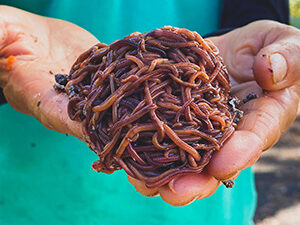
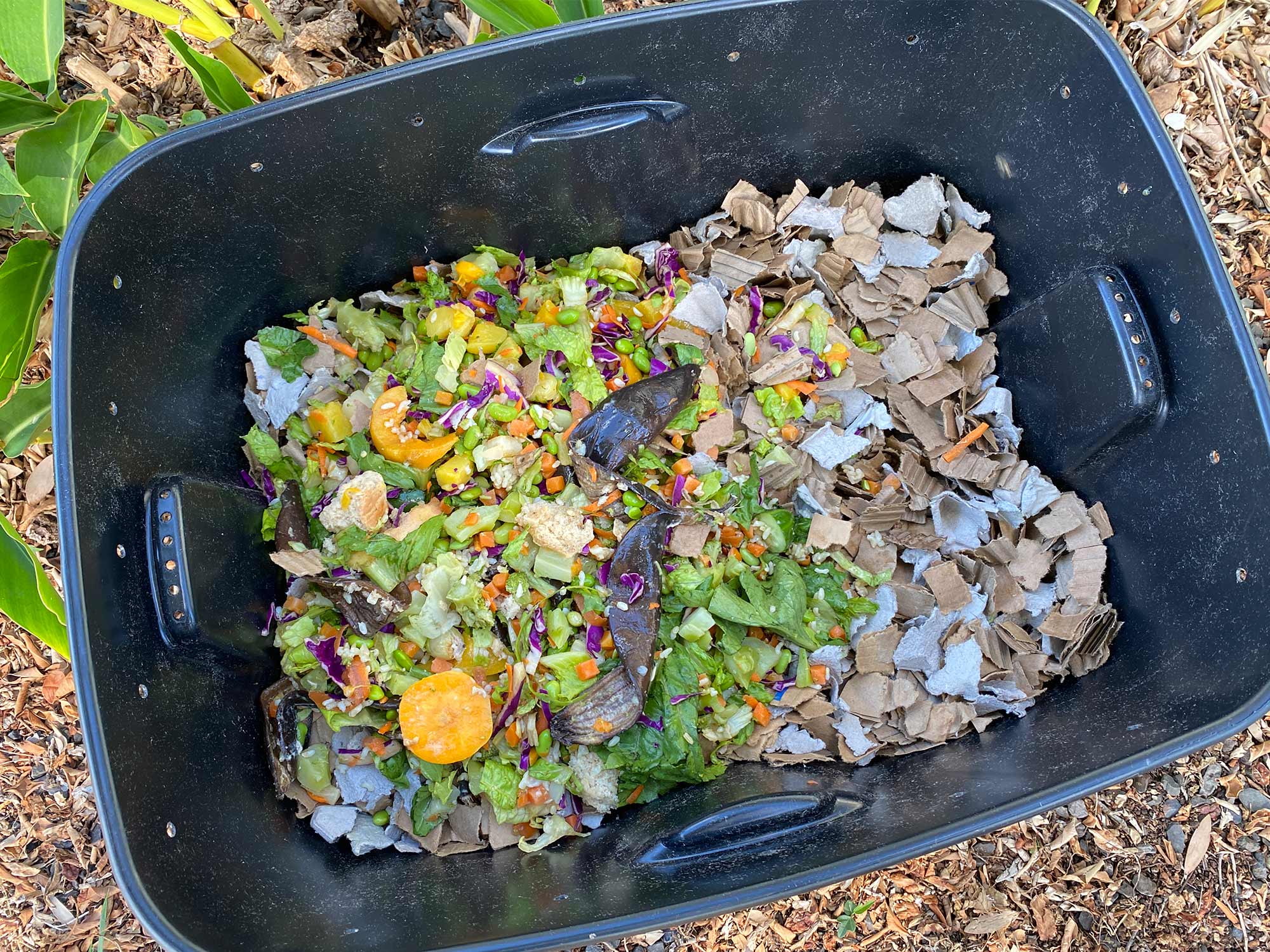
4. Food Waste
Add food waste. Feed chopped-up old fruit, fruit rinds, skins, peels and cores; any veggies or vegetable trimmings, and grains in moderation such as rice, bread, cereal, and pasta. Place food right on top of the bed. No meat, dairy, or papaya seeds.
Save food scraps in a container in the fridge and feed once a week.
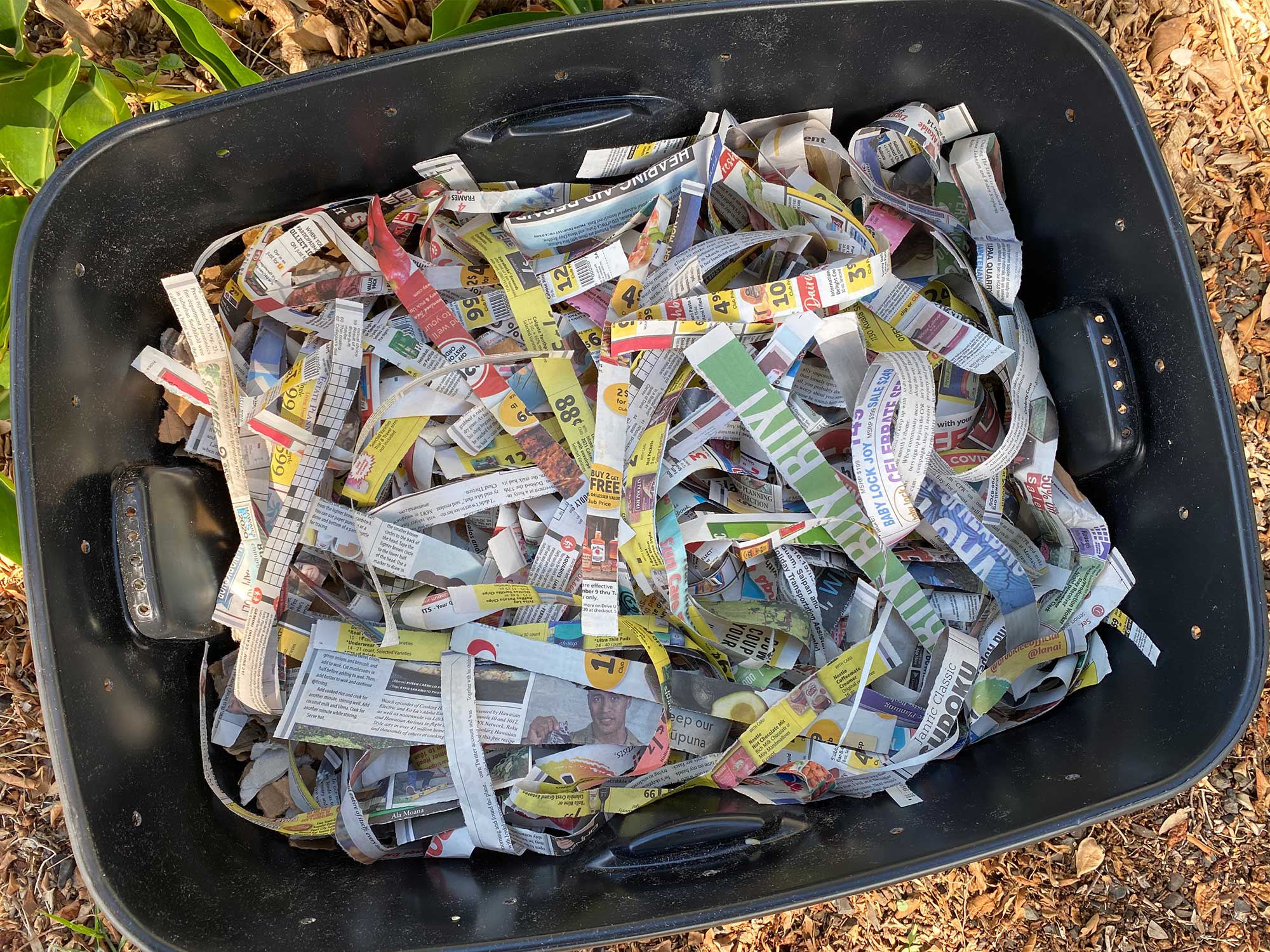
5. Shredded Paper
Cover the food completely with a layer of fluffed-up shredded office paper or newspaper. This paper will gradually be consumed. When you feed next, you will lift the paper layer or push it aside to add more food to the food layer. Replace the old disintegrating paper back on top and add new, fresh paper to cover.
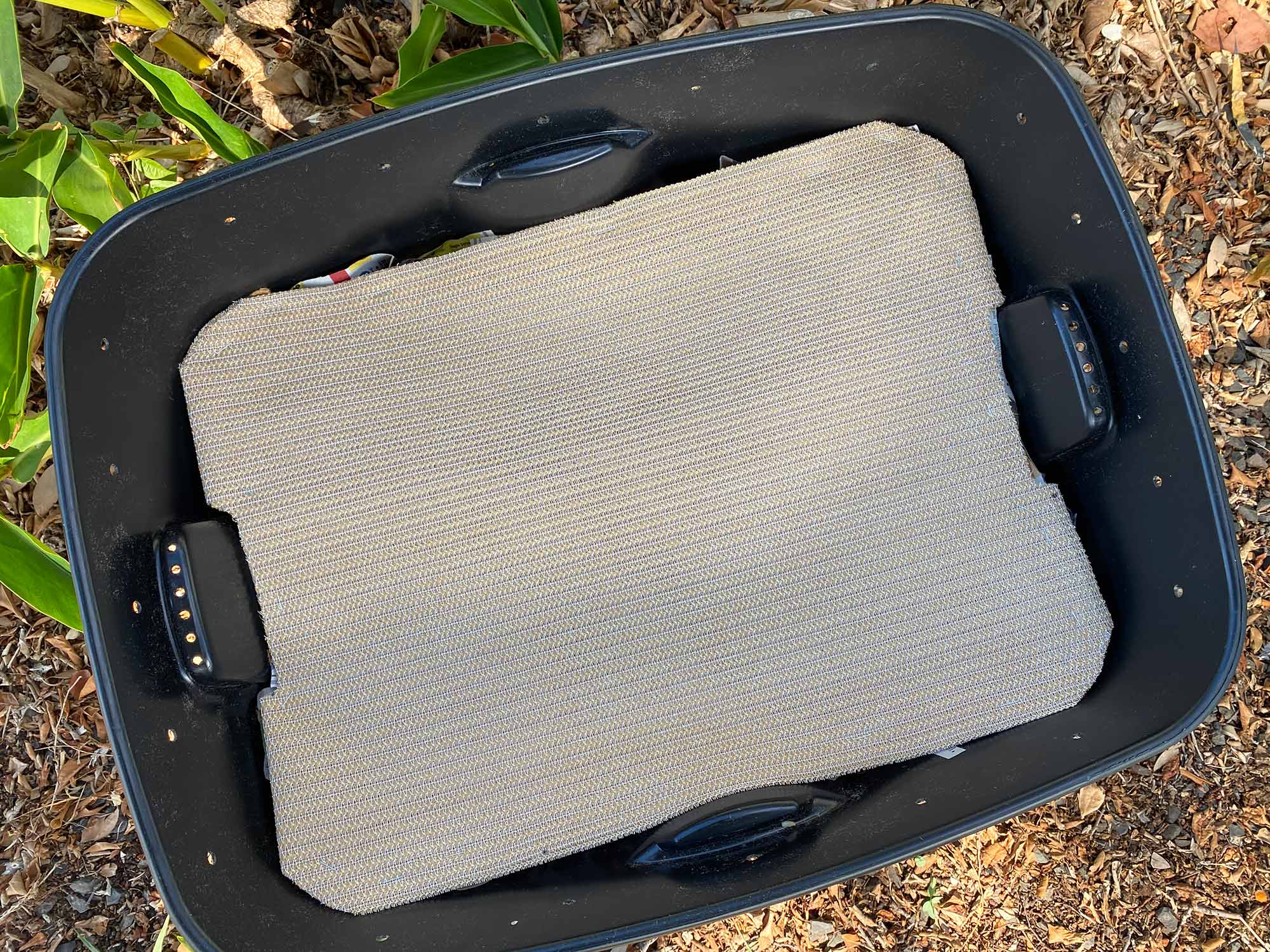
6. Bin Blanket
Top with a bin blanket of shadecloth. Water right through the bin blanket! Cover or not – the plastic box lid is optional.
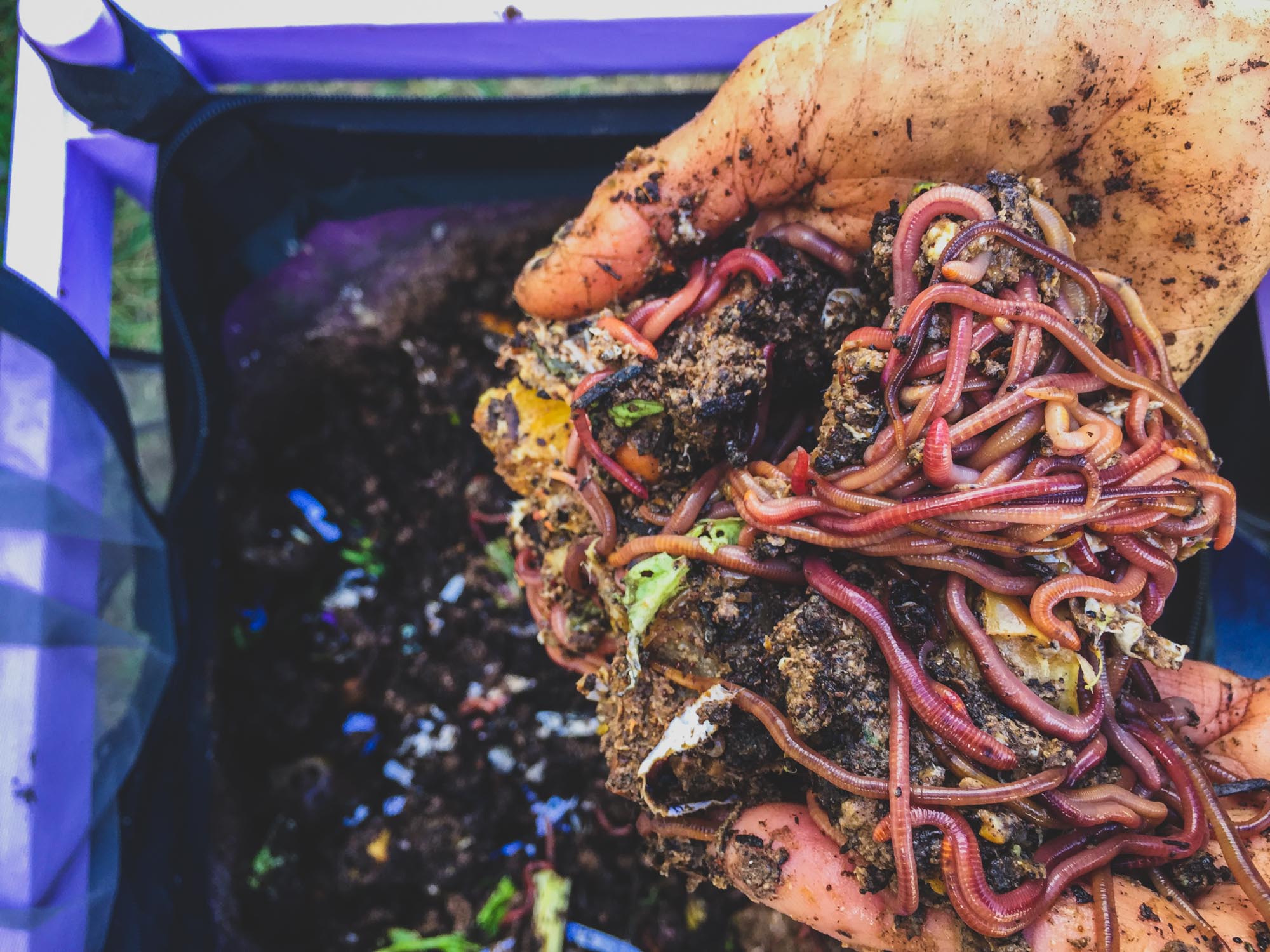
That’s it!
Remember to water daily, feed weekly, and harvest and re-bed every six months.
